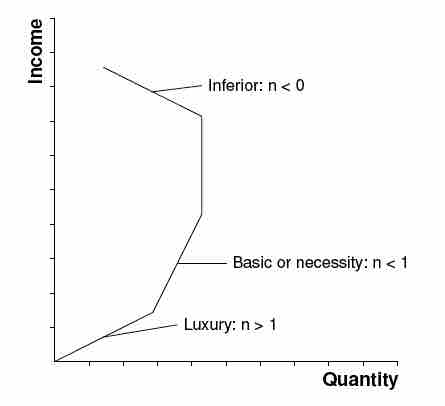The income elasticity of demand (YED) measures the responsiveness of demand for a good to a change in the income of the people demanding that good, ceteris paribus. It is calculated as the ratio of the percentage change in demand to the percentage change in income:
If an increase in income leads to an increase in demand, the income elasticity of that good or service is positive. A positive income elasticity is associated with normal goods. In contrast, if a rise in income leads to a decrease in demand, the good or service has a negative income elasticity of demand. A negative income elasticity is associated with inferior goods.
In all, there are five types of income elasticity of demand :

Income Elasticity of Demand
Income elasticity of demand measures the percentage change in quantity demanded as income changes.
- High income elasticity of demand (YED>1): An increase in income is accompanied by a proportionally larger increase in quantity demanded. This is typical of a luxury or superior good.
- Unitary income elasticity of demand (YED=1): An increase in income is accompanied by a proportional increase in quantity demanded.
- Low income elasticity of demand (YED<1): An increase in income is accompanied by less than a proportional increase in quantity demanded. This is characteristic of a necessary good.
- Zero income elasticity of demand (YED=0): A change in income has no effect on the quantity bought. These are called sticky goods.
- Negative income elasticity of demand (YED<0): An increase in income is accompanied by a decrease in the quantity demanded. This is an inferior good (all other goods are normal goods). The consumer may be selecting more luxurious substitutes as a result of the increase in income.